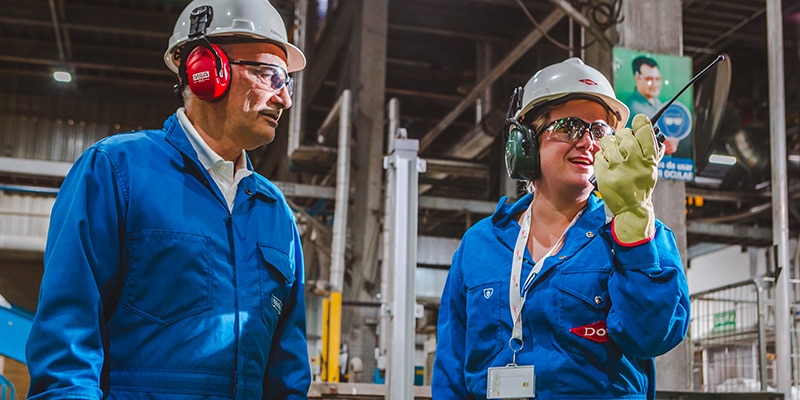Climate change has serious consequences for the global economy and human progress. At Dow, we understand and embrace our responsibility to accelerate work to reduce global emissions. That will require big changes in almost every sector of the economy – and the development of breakthrough technology and levels of infrastructure investment not seen in decades. While government must lead the way in the transition, companies also have a meaningful role to play.
Recognizing the risks and opportunities, many companies, including Dow, have taken major steps to reduce their climate impact and help achieve a net-zero economy. Our actions aren’t only aimed at reducing emissions, but also innovating and investing in new technologies that contribute to a low-emissions society, such as materials that help electrify cars, insulate buildings, preserve food, and enable renewable energy. Dow embraces our responsibility to accelerate work to reduce global carbon emissions and the unique role we play in creating the technology and products essential to a low-emissions future.
Dow’s Policy Position
- We support the aims of the Paris Agreement and the continued efforts at COP towards the creation of global carbon markets.
- Dow supports an economy wide market-based price on carbon. We believe an emissions trading system is the most efficient policy tool to do so.
- To the extent other carbon reduction policies are pursued, funds from carbon pricing should be invested towards process technology breakthroughs, deliver demand-driven scale-up opportunities, and be deployed in strategic infrastructure investments.
- In the absence of a global carbon market, carbon policies should protect the competitiveness of domestic, trade-exposed exporting manufacturers, such as through free allocation based on sector specific benchmarks.
- Government policies should accelerate the development of all forms of clean energy technologies (advanced nuclear, hydrogen, carbon capture and storage, etc.), make investments to modernize the transmission grid, and support industry’s deployment of energy efficient manufacturing processes and building materials.






